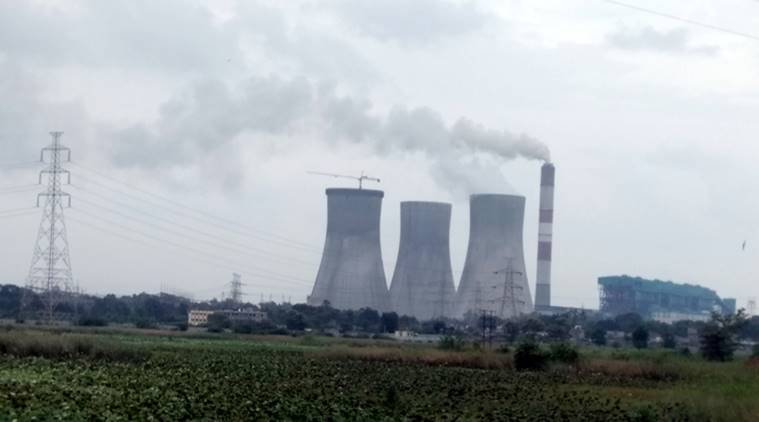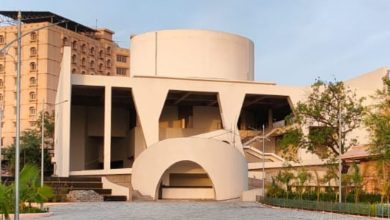Koradi Power Plant Gets Environmental Nod for 2 New 660MW Units

Koradi power plant: The energy landscape in Maharashtra is undergoing a significant transformation. With the state government-owned power utility Mahagenco receiving the much-anticipated Environmental Clearance (EC) for two new 660 MW supercritical thermal power units at Koradi, there’s much to discuss about the future of energy production. This clearance is part of a strategic initiative to replace old units and expand the thermal power capacity of the state. This article dives deep into the implications of this project and what it means for the future of energy in Nagpur and Maharashtra.
The Importance of the Koradi Power Plant Expansion
Koradi is already a major hub for energy production in the region. Currently, the thermal power station boasts a capacity of 2,190 MW. By adding these new supercritical units, Mahagenco plans to significantly boost the state’s energy output. But why is this expansion important?
Energy demands in Maharashtra are constantly growing, driven by industrial, commercial, and residential needs. The existing power units are aging, and their efficiency is gradually declining. The installation of two new 660 MW units will not only replace older systems but will also introduce more efficient, environmentally-friendly technologies, ensuring that the state remains energy-secure for decades to come.
What Are Supercritical Thermal Power Plants?
To fully appreciate this project, it’s essential to understand what makes supercritical thermal power plants unique. Unlike traditional thermal power plants, which operate under standard conditions, supercritical plants function at temperatures and pressures above the critical point of water. This allows for better efficiency, lower emissions, and reduced fuel consumption.
The two new units planned at Koradi will bring these benefits, helping to modernize Maharashtra’s power generation infrastructure and align with global efforts to reduce carbon footprints.
Mahagenco’s Power Generation Capacity: A Growing Force
At present, Mahagenco’s overall thermal power generation capacity exceeds 9,500 MW. The two new 660 MW units at Koradi will add 1,320 MW to this total, a significant contribution to the state’s energy production. Additionally, another 660 MW unit is expected to be commissioned soon at Bhusawal, further bolstering Mahagenco’s capabilities.
Environmental Clearance: A Green Light for Progress
Securing the Environmental Clearance for such a large-scale project is no small feat. This clearance ensures that the power plant meets stringent environmental standards, minimizing the impact on local ecosystems. This process often involves extensive environmental impact assessments (EIAs), public consultations, and thorough reviews by regulatory bodies.
The EC granted to Mahagenco for the Koradi project signifies that the new units will adhere to national guidelines for air, water, and soil quality, as well as waste management and resource conservation.
Impact on Local Communities and Employment
The addition of two new power units is not just a technical upgrade but also a socio-economic boost for the local community. The construction and operation phases of the new plants are expected to generate thousands of jobs, both directly and indirectly.
From construction workers to engineers and administrative staff, the project will likely bring significant employment opportunities. Moreover, increased energy capacity means better support for local industries, leading to further economic development in the region.
Challenges Ahead: What to Expect?
Although the Environmental Clearance marks a significant milestone, the road ahead is not without challenges. The construction of these new units is expected to take four to five years, which means that the benefits won’t be immediate. During this period, Mahagenco will have to navigate potential obstacles such as delays in construction, regulatory hurdles, and financial considerations.
The Future of Thermal Power in Maharashtra
As the state continues to invest in both renewable and non-renewable energy sources, the addition of supercritical thermal power plants like Koradi signifies a balanced approach. While renewables are growing rapidly, thermal power still plays a critical role in meeting the state’s base load energy requirements.
With modernized, more efficient units in place, Maharashtra can better manage its energy mix and ensure a steady supply of power to its rapidly growing population and industries.
Sustainability and Energy Security
The world is in the midst of an energy transition, moving towards cleaner, more sustainable power sources. However, thermal power remains a cornerstone of energy security, particularly in developing economies like India. The Koradi expansion is a step towards modernizing traditional energy infrastructure while keeping sustainability in focus.
Why Koradi’s Upgrade Matters for Nagpur
Nagpur, often referred to as the heart of Maharashtra, is a critical industrial and economic hub. The upgraded Koradi Power Plant will ensure that the city has a reliable supply of energy, which is crucial for industries, businesses, and homes. As Nagpur grows, so too will its energy needs, and projects like this ensure that the city’s energy future remains bright.
Timelines and Expectations for the Koradi Project
The project is expected to take between four to five years for completion. Given the scale of construction and the complexity of the machinery involved, this timeline is considered reasonable. However, it’s important to note that unforeseen delays are always a possibility in large infrastructure projects.
How Will Koradi’s Expansion Affect Power Tariffs?
While the primary goal of the Koradi expansion is to boost capacity, there’s also a potential for this project to stabilize or even lower electricity tariffs in the long term. As newer, more efficient units come online, the cost of power production per unit should decrease, which could translate to savings for consumers.
Government Support for Energy Infrastructure
The government’s backing of Mahagenco’s expansion is part of a broader strategy to strengthen India’s energy infrastructure. By modernizing old plants and introducing new, more efficient technology, the government is ensuring that energy supply keeps pace with demand while minimizing environmental impact.
A Step Forward for Maharashtra’s Energy Future
The addition of two new 660 MW supercritical thermal power units at Koradi represents a major advancement in Maharashtra’s energy sector. Not only will these new units replace aging infrastructure, but they will also boost the state’s overall capacity, ensuring a more reliable and sustainable energy supply. The Environmental Clearance is a crucial first step in this process, and while challenges lie ahead, the long-term benefits are undeniable.
1. What is the current capacity of the Koradi Power Plant?
The current capacity is 2,190 MW, which will increase by 1,320 MW with the addition of two new units.
2. How long will it take to complete the new units?
The construction of the two new units is expected to take four to five years.
3. What is a supercritical thermal power plant?
Supercritical thermal power plants operate at higher temperatures and pressures, making them more efficient and environmentally friendly than traditional plants.
4. How will the Koradi expansion impact local communities?
The project is expected to create numerous jobs during both construction and operation phases, benefiting the local economy.
5. What other projects are in the pipeline for Mahagenco?
In addition to Koradi, Mahagenco is planning to commission a new 660 MW unit at Bhusawal in the near future.









